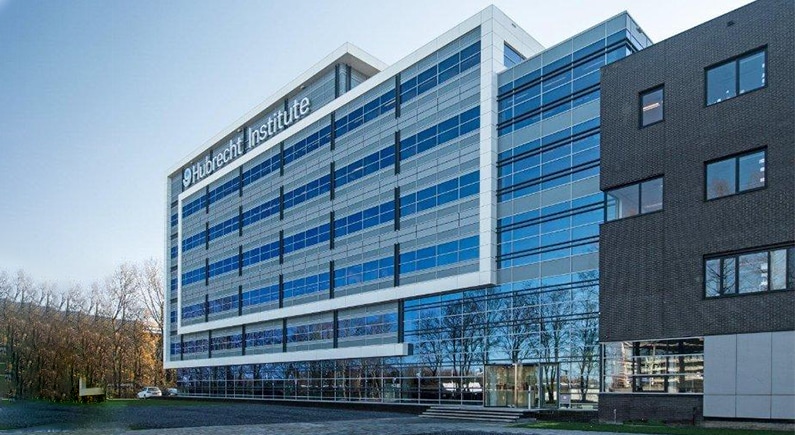
Michael Joe Cini
31st May 2023
Patient-derived Cancer Organoids: Insights into Clinical Outcomes
A team of researchers at the Hubrecht Institute in the Netherlands have recently developed an organoid biobank for offering insights into clinical responses that could ordinarily be elicited in patients. Organoids are derived from the tissue samples of cancer patients, and the researchers find that they mimic the tissues of the original organism in terms of function and responses to therapy. This offers new opportunities in cancer treatment, as organoids can serve as a good proxy for testing new treatments and designing new treatment regimens for patients.
Organoids for cancer treatment and therapy
Defying the odds, a team of researchers at the Netherlands’s Hubrecht Institute have recently created a biobank of cancer organoids using tissue samples obtained from head and neck cancer patients. Organoids are tiny 3D constructs made from patient tissues designed to mimic a particular type of tissue response. Organoids are grown in lab culture and designed to be as identical to the original tissue as possible to elicit the same responses as the actual tissue in specific conditions. The idea behind organoids is that they can provide a wealth of knowledge on various disease states and pathologic conditions, as well as an opportunity to identify effective treatment regimens by directly monitoring the tissue responses in response to therapy.
Currently, researchers use experimental animals (such as mice) and simple cell cultures, which do not accurately reflect or replicate the complex responses of living human tissues. Organoids present an opportunity to observe the responses that could be expected from human tissue while alleviating the ethical concerns that typically arise from testing new treatment regions. While scientists have been interested in the idea of organoids, before the work of the Hubrecht team, little clinical work investigated whether patient-derived organoids would reflect the clinical responses in human patients.
This study investigates outcomes for patients of head and neck cancers, as the researchers used the biobank to validate tumour biomarkers. The team collected tissue samples from head and neck cancer patients during surgeries and created a biobank of tumour organoids. They then investigated the effects of different therapies on the organoids, with exciting results emerging from their experiments. The researchers found that the treatment outcomes between the original patient and the organoids were similar, showing that the organoids could closely model clinical reality.
Rosemary Millen, a co-first author of the paper and fellow of the Royal Netherland Academy of Arts and Sciences, commented, “The organoids, therefore, hold potential for predicting patient outcomes. The correlation between organoid and patient response was there for patients receiving adjuvant radiotherapy, meaning that radiation is used in addition to surgical resection of the tumour.”
Creating the cancer biobanks: Exciting results from Hubrecht
The team found exciting results from the study, publishing them in Med’s May 12, 2023, issue. In a paper titled ‘Patient-derived head and neck cancer organoids allow treatment stratification and serve as a tool for biomarker validation and identification,’ the researchers described their findings from the experiments.
The researchers obtained tissues for the organoid banks from tumour fragments obtained during surgical resection of head and neck cancers. A small piece of tumour and some adjacent non-cancerous tissue were sampled following surgery from the resection specimen at the pathology department. They then cut the tissue samples into small pieces, some used for DNA isolation and others for histological studies. After further processing, the tissues were plated in tiny droplets on 48-well suspension culture plates and incubated.
Organoids were grown from the primary material in culture media, supplemented with caspofungin and Y-27632 for a week. The fully processed organoids were biobanked using Cell Banker 1 and stored in cryovials at -80°C. Following processing and freezing, the researchers proceeded to thaw the samples and measure their response to therapy. Commenting on their methods, the researchers wrote in Med, “To address whether organoids hold potential to stratify treatment for patients with head and neck cancer (HNC), we measured the response of organoids to either radiotherapy (RT) or chemoradiotherapy (CRT) and compared this with the response of patients diagnosed with primary HNC.”
The research team attempted to investigate the effects of both chemotherapy and radiotherapy by measuring the responses to various drugs. Cisplatin, carboplatin, and Cetuximab were given at doses with a less-than-maximal effect to combine with radiotherapy, which was given at different intensities. Nutlin-3a, Everolimus, Niraparib, Alpelisib, AZD4547, EZP01556, and Tipifarnib were used to study the effects of chemotherapy on the organoids.
The researchers assessed the results of organoids that received radiotherapy and chemoradiotherapy for correlation with patient responses. Chemoradiotherapy is a form of therapy that combines anticancer drugs with therapeutic irradiation to maximize the degree of cancer eradication in patients. Else Driehuis, a researcher involved in the study, commented on the correlation the researchers found: “Here we show that two specific chemotherapy drugs, cisplatin and carboplatin, have a radiosensitizing effect in the organoids. This means that it makes the tumour cells more sensitive to radiotherapy. These results are consistent with what we see in the clinic and therefore underline again the predictive potential of organoids in this setting.”
Organoids valuable for personalized treatment
The project was a collaborative effort between 19 researchers at the Hubrecht Institute. However, Willem W.B. De Kort and Rosemary Millen were instrumental in the conceptualization and initiation of the study. De Kort is a PhD student at the Hubrecht Institute with interests in Developmental Biology and Stem Cell research. He has previously worked on prognostic values and biomarkers for head and neck squamous cell carcinoma. Rosemary Millen is a postdoctoral fellow at the Hubrecht Institute and has experience in immunology and oncology.
In the study, the researchers collaborated with surgeons, oncologists, and radiologists, aiming to make organoids valuable for personalized treatment decisions in the clinic. An Oncode Institute fund and the Mark Foundation for Cancer Research supported the work. Driehuis, one of the researchers on the team, is hopeful of the potential of biobanks for clinical cases. In his words, “Taken together, our results highlight the clinical relevance of organoids derived from patient tumour tissue. One of the next steps would be to design a clinical trial, to really use the organoids to guide treatment decisions in HNC patients.”
ENGAGE WITH MED-TECH INNOVATION IN MALTA!
Step into the Med-Tech World Summit in Malta on October 19-20 and become part of the pioneering community shaping the future of healthcare. Join industry leaders and tech enthusiasts as they unravel the potential of medicine. Save the date for this exceptional event!




